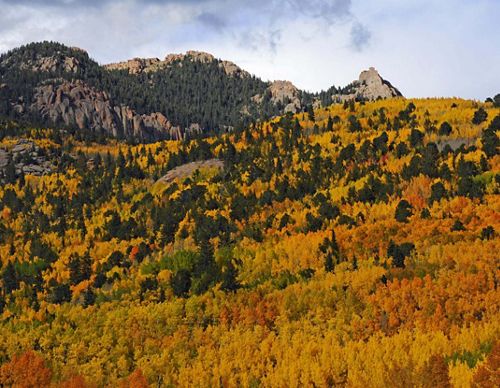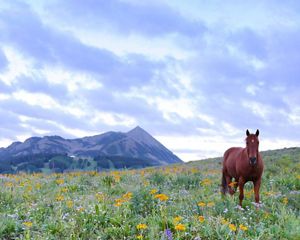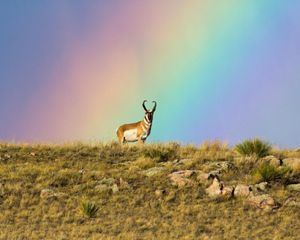
Internships and education Each year, interns spend the summer at Carpenter Ranch, helping with field work and conservation research. © TNC
Who might you find crawling around in an attic with a can of spray foam, researching electric vehicles, catching leaks, installing heat pumps, and ordering new signage for a preserve? It’s all in a day’s work for Jon Ray Gardner, sustainability facilities manager for The Nature Conservancy (TNC) in Colorado.


TNC takes great care in managing its preserves and properties. While this often comes in the form of monitoring the lands, waters, plants, and animals, it also means caring for the buildings and other infrastructure that exist on our properties across the state—from Fox Ranch Preserve near Wray to the historic Carpenter Ranch Preserve near Steamboat Springs. Being good stewards of these properties is paramount to our work.
Another priority is to incorporate sustainability practices and reduce greenhouse gas emissions from our properties. We have a goal to reduce emissions by 50% by 2030 to help in the fight against climate change.
Stay Connected.
Sign up to receive monthly conservation updates and how you can get involved.
“Part of my role at TNC is to keep track of general facilities and vehicle fleet maintenance and keep things working,” says Gardner. “In that sense, I’m like any other facilities manager. What makes my role unique and particularly engaging for me is that I also get to focus on reducing carbon emissions from our systems and encourage cultural and behavioral change to reduce emissions in how we operate."
Carpenter Ranch Preserve





Gardner’s approach is multi-phased, starting with energy efficiency projects like increased insulation and high-efficiency heating and cooling systems. The second phase is focused on electrification to replace systems that use fossil fuels—internal combustion engines and gas boilers—with electric equivalents, such as electric vehicles or heat pumps. The final phase is transitioning to electricity that comes from renewable energy sources like solar and wind.
Gardner has been able to leverage a variety of funding sources, from public grants to utility rebates to private donations, to support projects that make our preserves and properties more sustainable
Quote: Jon Ray Gardner
All of this work is critical not only to reach TNC’s operational carbon reduction goals, but also to contribute to the clean energy transition we so badly need to reduce dangerous climate change impacts.
With many more projects on his wish list, Gardner is excited for the future.
“I’m grateful TNC Colorado had the self-awareness and foresight to recognize the need for this position,” says Gardner. “I’m honored and stoked to be in this role and excited about the improvements we can make that can make a big difference.”
Places We Protect
For more than 55 years, we have helped protect more than one million acres of land throughout the state, from Carpenter Ranch near Steamboat Springs to JE Canyon in southeast Colorado to Phantom Canyon along the Cache la Poudre River northwest of Fort Collins.


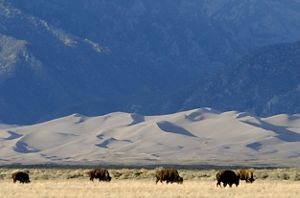
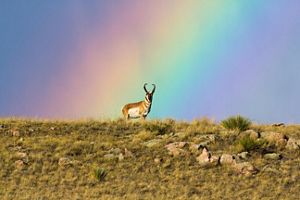

Fox Ranch Preserve: This ranch is home to high-quality examples of native prairie and streamside plant communities that support a diverse range of wildlife. © John Fielder

Carpenter Ranch Preserve: This preserve is home to one of the world's largest remaining examples of a rare riparian forest type dominated by narrowleaf cottonwood, box elder and red-osier dogwood. © © Fran Carlisle Photography

Medano-Zapata Ranch Preserve: TNC purchased this preserve in 1999 and soon after developed the plan to transfer some of the acquired land for the creation of Great Sand Dunes National Park. © Dave Showalter

Phantom Canyon Preserve: TNC protected this preserve in 1987 primarily because this extensive foothills ecosystem supports the Larimer aletes (Aletes humilis), a rare member of the parsley family. © Carly Voight/TNC
